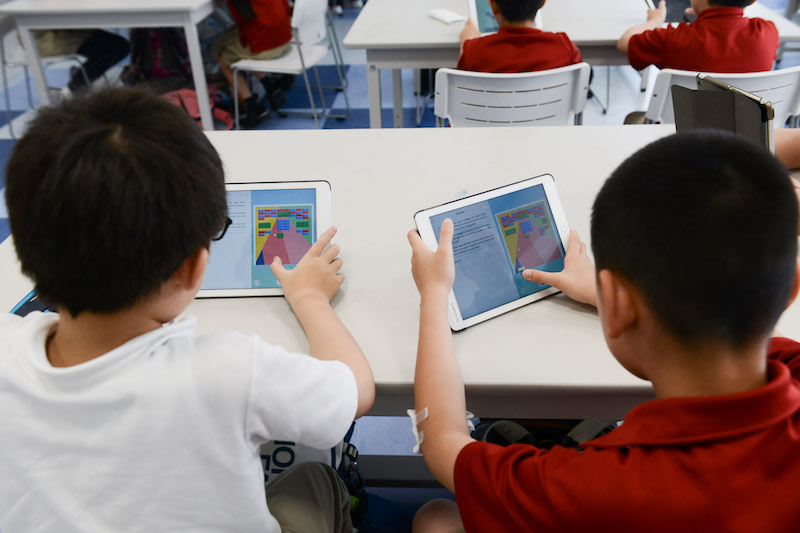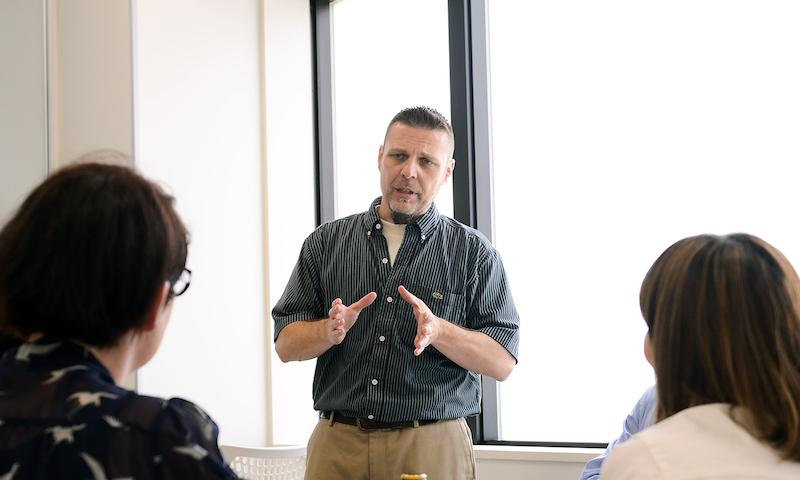A journey into Virtual Learning
Posted on 3rd Sep 2020 in School News, Japan, Online Learning

As educators adjust to the changes in the world, Daniel Roebuck asked Elementary Vice Principal and PYP Coordinator, Mike Mural, about how Chiyoda International School Tokyo prepared for this shift to a Virtual Learning environment and how students and teachers adjusted to this switch
Daniel Roebuck: Could you describe what virtual learning is and how it works?
Mike Mural: Virtual Learning is a concept where learning which would normally take place in the physical classrooms of the school, moves online to ensure that the learning continues during the day. The goal of Virtual Learning is not to replicate the timetable of a traditional school day, but rather for students to carry on with their program of learning. Instead of students being given a lesson for every subject that is timetabled for that particular day, they are tasked with authentic activities connected with the Unit of Inquiry that they were studying, prior to the sudden school closure.
DR: How did you prepare for the sudden change to the learning environment?
MM: Fortunately, being in Japan, we were lucky to have access to other international educators and international schools around the Asia-Pacific region, which had already been closed earlier and quickly shifted to the online format. These educators and administrators were willing to share their strategies, successes and challenges across social media as well as with their Professional Learning Networks (PLNs) through various online visual content platforms. These educators had already curated a list of valuable resources and shared them via the twitter community. This helped CHIST to have a valuable head start when planning our Virtual curriculum, especially as we only had less than 24-hours to prepare everything.
DR: So, what does a typical day currently look like for CHIST students and teachers?
MM: Homeroom teachers at CHIST are tasked with posting a set of activities for their students no later than 8:00am each weekday morning, via emails to parents, as well as posting through Seesaw and/or Google Classroom. Single subject teachers (e.g. Art, Music, P.E. and Japanese) were also encouraged to post student activities twice a week. The teachers are also available online for students for a minimum of four hours per day, either continuously or split into segments (e.g. 8:00-10:00am and 1:00-3:00pm) in order to provide feedback and adding positive comments to each post that one of their students make via Seesaw. Students are expected to have about four hours of work per day (again, either continuously or split into segments). During each ‘virtual’ school day, using their iPad or laptop, students can be assigned reading, mathematics and literacy assignments, along with other digital library resources or direct links for assessments related to their Unit of Inquiry. During this time, the administration is also available to continue regular communication with the parent community, as well as supporting teachers and students as needed. The ICT staff are also available to support the infrastructure of all platforms and provide support whenever necessary.

DR: Can you talk to me about the pros and cons of Virtual Learning, from your observations?
MM: Some of the positives we noticed when moving to a Virtual Learning format involved the continued level of engagement of students, both in posting work and video reflections as well. I can attest to this personally, as my son is also a student at this school. Every morning, shortly after 8:00am, he logs in to Google Classroom to see what assignments he has to complete for the day. If he has to post a video reflection, he will take the time to write down what he wants to say first, and then rehearses with me before recording, so that he can give the best response possible. The routines set for him are that he has to complete two assignments before lunch, and then two after. He can use the other time to pursue other interests, like practice coding on his iPad or practice Kanji.
Another positive is that while this online learning format was unfamiliar to teachers, and previously untested at this scale, our Virtual Learning environment demonstrated an increase in teacher confidence when using technology and these platforms. Our teachers worked with dedication and purpose to ensure that the teaching and learning carried on, despite all of our students being at home.
Some of the challenges that occurred with moving to this format involved the use of devices and access. A number of families have more than one child attending our school, so these children may have to share a device at home, which affects the amount of time they can devote to their work and can adversely affect the time at which students can submit their work. Also, we had to ensure in advance that all students would have access to their login information when at home, so the administration worked quickly to ensure that all login information and QR codes (to scan and open up Seesaw) were printed out and handed to each student.
Another challenge was in making sure that everyone (teachers, parents and students) was aware that when at home, the parents were not to be placed in the role of ‘teacher’. The tasks assigned by teachers should be sufficiently explained by teachers so that their students should be able to independently access the relevant material and carry out each task.
DR: Thank you for your time, Mike.
Now the Vice Principal and PYP Coordinator at CHIST, Mike Mural spent over sixteen years at international schools and has extensive experience with the IB curriculum, especially in the PYP as well as previously teaching at elementary schools in Canada and England. He has also presented at various educational and technology-related workshops at conferences in Japan and Asia.
This article first appeared in John Catt's Guide to International Schools 2020/21, which you can view in full here: